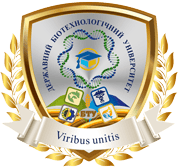Використання сучасних інформаційних технологій у відтворенні свиней
Анотація
В статті наведені результати використання тепловізора TI-120 для дистанційного визначення температури, розмірів, маси поросят на різних етапах постнатального періоду. Подається методика дослідження, що дає можливість діагностувати гіпотермію, гіпоксію, гіпотрофії та деякі інші патології поросят.
Завантаження
Посилання
Brown-Brandl, T. M., Eigenberg, R. A., & Purswell, J. L. (2013). Using thermal imaging as a method of investigating thermal thresholds in finishing pigs. Biosystems Engineering, 114(3), 327-333. doi: 10.1016/j.biosystemseng.2012.11.015.
Cook, N. J., Chabot, B., Lui, T., Bench, C. J., & Schaefer, A. L. (2015). Infrared thermography detects febrile and behavioural responses to vaccination of weaned piglets. Animal, 9(2), 339-346. doi: 10.1017/S1751731114002481.
Della Ricci, G., da Silva-Miranda, C. O., & Tito, C. G. (2019). Infrared thermography as a non-invasive method for assessing heat stress in pigs kept in cell-free pens in maternity hospitals. Computers And Electronics In Agriculture, 157, 403-409. doi:10.1016 / j.compag.2019.01.017.
Ivanchenko, M. M. (2008). Rozpovsiudzhennia, prychyny vynyknennia ta rozrobka sposobu profilaktyky antenatalnoi patolohii u svynei v fermerskykh hospodarstvakh Ukrainy.Problemy zooinzhenerii ta veterynarnoi medytsyny: zb. nauk. prats KhDZVA, 16 (41), 2, (in Ukrainian).
Koshovyi, V. P., Ivanchenko, M. M., Fedorenko, S. Ya., Naumenko, S. V. Onyshchenko, O. V., & Pasternak, A. M. (2008). Kompiuterni prohramy v akusherstvi, hinekolohii, androlohii ta biotekhnolohii rozmnozhennia tvaryn: metodychni rekomendatsii. Kharkiv: RVV KhDZVA. (in Ukrainian).
Loughmiller, J. A., Spire, M. F., Tokach, M. D., Dritz, S. S., Nelssen, J. L., Goodband, R. D., & Hogge, S. B. (2005).An evaluation of differences in mean body surface temperature with infrared thermography in growing pigs fed different dietary energy intake and concentration. Journal Of Applied Animal Research, 28(2), 73-80. doi: 10.1080/09712119.2005.9706795.
Manno, M. C., de Oliveira, R. F. M., Donzele, J. L., Oliveira, W. P., Vaz, R. G. M. V., Silva, B. A. N. … Lima, K. R. D. (2006). Effects of environmental temperature on performance of pigs from 30 to 60 kg live weight. Revista Brasileira De Zootecnia-Brazilian Journal Of Animal Science, 35(2), 471-477. doi: 10.1590/S1516-35982006000200019.
Mccafferty, D. J. (2007). The value of infrared thermography for research on mammals: previous applications and future directions. Mammal Review, 37(3), 207-223. doi: 10.1111/j.1365-2907.2007.00111.x.
McManus, C., Tanure, C. B., Peripolli, V., Seixas, L., Fischer, V. … Costa, J. B. G. (2016). Infrared thermography in animal production: An overview. Computers And Electronics In Agriculture, 123, 10-16. doi: 10.1016/j.compag.2016.01.027.
Melnikov, G. S., Samkov, V. M., & Soldatov, Y. I. (2010). Sovremennyie meditsinskie teplovizoryi. Materialyi IX Mezhdunarodnoy konferentsii «Prikladnaya optika – 2010», 11–17. (in Russian).
Quiniou, N., Noblet, J., van Milgen, J., & Dubois, S. (2001). Modelling heat production and energy balance in group-housed growing pigs exposed to low or high ambient temperatures. British Journal of Nutrition, 85(1),97-106. doi: 10.1079/BJN2000217.
Rinaldo, D., & Ledividich, J. (1991). Assessment of optimal temperature for performance and chemical body-composition of growing pigs. Livestock Production Science, 29(1), 61-75. doi: 10.1016/0301-6226(91)90120-F.
Schaefer, A. L., Jones, S. D. M., Murray, A. C., Sather, A. P., & , Tong, A. K. W. (1989). Infrared thermography of pigs with known genotypes for stress susceptibility in relation to pork quality. Canadian Journal of Animal Science, 69(2), 491-495, doi: 10.4141/cjas89-056.
Yanez-Pizana, A., Mota-Rojas, D., Ramirez-Necoechea, R., Castillo-Rivera, M., Roldan-Santiago, P., Mora-Medina, P., & Gonzalez-Lozano, M. (2019). Application of infrared thermography to assess the effect of different types of environmental enrichment on the ocular, auricular pavilion and nose area temperatures of weaned piglets. Computers and Electronics in Agriculture, 156, 33-42. doi: 10.1016/j.compag.2018.11.010.
Zayats G.A, & Koval V.T. (2010). Meditsinskoe teplovidenie – sovremennyiy metod funktsionalnoy diagnostiki. Zdorove. Meditsinskaya ekologiya. Nauka, 43(3), 27–33. (in Russian).
Переглядів анотації: 1280 Завантажень PDF: 1088





